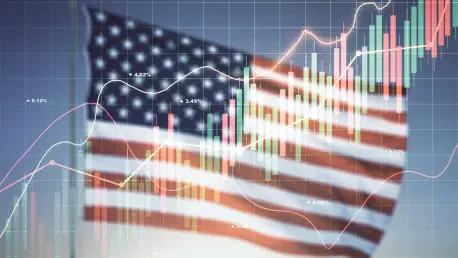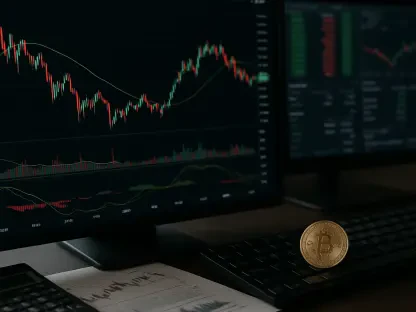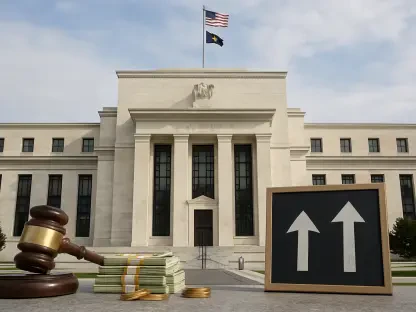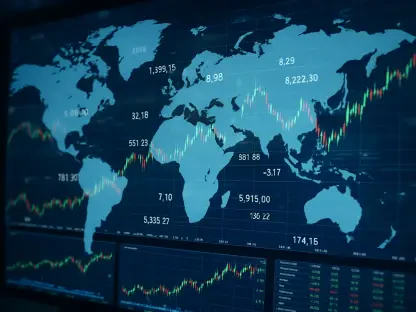U.S. financial markets are in flux as they grapple with the confluence of stringent new tariffs, looming inflation data, and a striking surge in Bitcoin. Investors currently confront a tempest of economic changes and are reevaluating their strategies in response to mounting uncertainties. The dynamic tension in the markets is largely driven by fluctuating U.S. stock futures, with significant movements in the Dow Jones Industrial Average, S&P 500, and Nasdaq indicating a shift in investors’ outlooks. As markets recalibrate to address these pressing developments, the interplay between macroeconomic policies and investor sentiment presents a nuanced perspective on contemporary financial dynamics. Amidst these unfolding layers, stakeholders are keenly observing the potential ripple effects on various sectors, preparing for what promises to be a pivotal period in market evolution.
Tariffs and their Ripple Effects
Recent proclamations from President Donald Trump, announcing a 30% tariff imposition on goods imported from the European Union and Mexico starting August 1, have become a central catalyst for current market volatility. This announcement has altered the narrative surrounding global trade relations, adding layers of complexity to the economic interactions between the United States and its trading partners. The tariffs have heightened concerns about inflationary pressures, as businesses assess the implications for cost and supply chain dynamics. In the face of these trade tensions, market apprehensions are intensifying, especially given the looming deadline for tariff implementation. While the European Union and Mexico are caught between negotiation potential and escalating tariffs, these developments reflect a broader geopolitical friction that continues to shape financial markets.
The tariffs have also raised questions about the Federal Reserve’s monetary policy, with market participants anticipating how the June Consumer Price Index will influence upcoming discussions on interest rate adjustments. The tussle between the White House and the Federal Reserve is further complicated by the suggestion that the administration may consider leadership changes if decisions are not aligned with its economic outlook. Against this backdrop, the financial community is more vigilant than ever, dissecting economic indicators for clues regarding potential shifts in fiscal policy. As inflationary data is released, stakeholders will closely track the Federal Reserve’s stance on interest rates, monitoring the potential impacts on economic growth and stability.
Earnings Reports and Market Sentiment
The earnings season, headlined by major financial institutions like Wells Fargo, is anticipated to serve as a barometer for market health. Beginning Tuesday, significant banks are scheduled to release their quarterly results, offering critical insights into the financial ecosystem. This data is expected to be revelatory, conveying broader economic themes and investor responsiveness. In tandem with the financial sector, technology companies such as Netflix and Taiwan Semiconductor Manufacturing are slated to announce their performance metrics, focusing on AI advancements and semiconductor demand. This confluence of diverse industry insights will guide investor decisions, particularly in assessing how technological trends are influencing broader market dynamics.
As investors brace themselves for these earnings revelations, the focus expands to include other corporate giants like PepsiCo, United Airlines, and American Express. These entities provide additional clarity on consumer behavior and economic momentum, offering further context to stakeholders analyzing market potential in the face of challenging conditions. The overarching narrative within this earnings season is shaped by the juxtaposition of traditional financial metrics against the backdrop of evolving trade policies and inflation projections. As outcomes are disclosed, the resulting investor behaviors will illuminate prevailing market trends, highlighting both vulnerabilities and strengths within the current landscape.
Bitcoin’s Resurgence
Parallel to these financial market developments, Bitcoin has been attracting considerable attention from global investors. The cryptocurrency recently rallied beyond the $120,000 mark, signaling a resurgence in investor confidence. This renewed optimism underscores Bitcoin’s transition from a speculative asset to a formidable macroeconomic hedge. The cryptocurrency’s dramatic ascension is also attributed to robust institutional investments, particularly in Bitcoin and Ethereum ETFs, signifying enhanced legitimacy and market maturity. This development signals a paradigm shift in the perception and utilization of Bitcoin, acknowledging its potential as a structurally scarce store of value amidst rising economic uncertainties.
Beyond Bitcoin, smaller cryptocurrencies are reflecting similar upward trends, with Ether, XRP, and Solana witnessing marked increases. As these digital assets gain traction, industry analysts suggest that surpassing $125,000 could present a significant benchmark for Bitcoin. Despite occasional profit-taking pressures, the sustained demand fueled by exchange-traded funds suggests strong underlying support. This interest positions Bitcoin as a viable investment option, heralding potential opportunities in the ensuing market environment. With Bitcoin’s evolving role, the traditional skepticism associated with its volatility appears to be subsiding, making room for a more strategic integration into investment portfolios.
Gold’s Enduring Appeal
President Donald Trump’s recent decision to impose a 30% tariff on imports from the European Union and Mexico, starting August 1, has significantly impacted market dynamics. This announcement has complicated global trade relations, adding new layers of difficulty to economic interactions between the U.S. and its trading partners. Businesses are now grappling with concerns about soaring costs and disrupted supply chains, which, in turn, have heightened fears about inflation. The looming tariff deadline intensifies these worries, amid shifting negotiations with the EU and Mexico. These tariffs exemplify broader geopolitical tensions influencing financial markets. They also prompt questions about the Federal Reserve’s monetary policy, as market watchers eye the June Consumer Price Index for clues on future interest rate decisions. The White House’s potential influence over Federal Reserve leadership adds to the uncertainties. In this environment, the financial community remains extra vigilant, closely analyzing key economic indicators to foresee changes in fiscal policy and monitor impacts on economic growth and stability.









